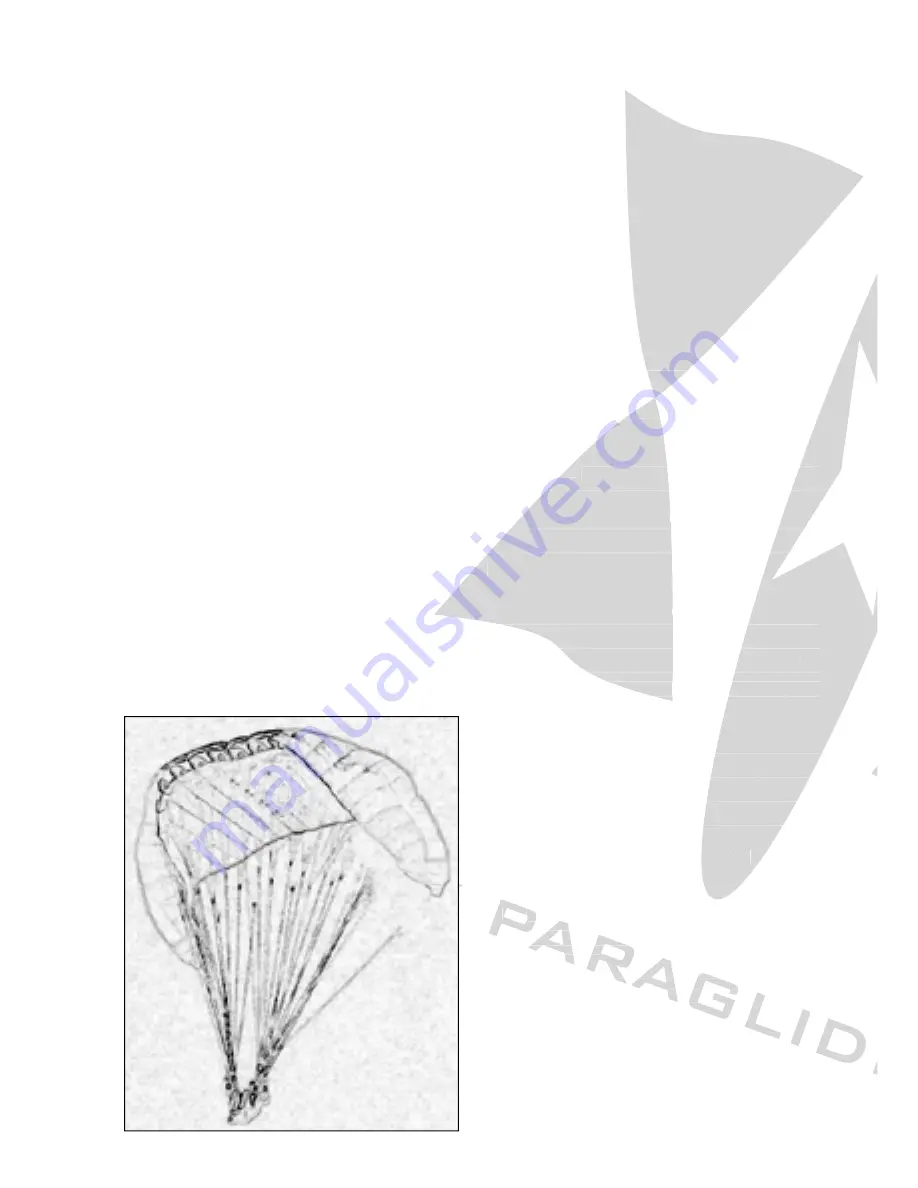
Owners Manu
al
XIX FORM 3
Quick descent
Never let go of the brakes during the following
manoeuvres - you will then be able to react im-
mediately if any problems arise during these moves,
which are demanding at the best of times.
You are probably already familiar with several rapid
descent methods.
‘Big ears’
The best descent method is big ears because only
the wing loading and the sink rate increase and no
stall occurs. Sufficient forward speed is maintained
and reduced manoeuvrability is possible through
weight-shifting.
The sink rate is not as high as with other descent
methods, but maintaining forward motion allows
you to fly out of a lift band.
The
FORM 3
has a split A-riser system. This makes
big ears easier because you do not need to spend
time looking for the right A-risers. To carry out this
manoeuvre, grab the outside A-risers and pull them
down towards you.
The sink rate and forward velocity can be increased
by using the speed system. This is a very stable flying
position. You will only be able to turn the glider by
weight-shifting. The sink rate increases to approxi-
mately 4-5 m/s.
To return to normal flight, simply release the A-ris-
ers, ease off the speed system and the glider should
re-inflate. If this does not happen, then a short sharp
pump on the brakes will help. Be careful not to
brake for too long – this can cause a stall.
WARNING!
You should not use ‘big ears’ during spi-
ral dives. This can overload parts of your
equipment.
The FORM 3 must not be flown with con-
stant brake when big-ears are applied
(risk of stall).
The sink rate is not as high as with other descent
methods, but maintaining forward motion allows
methods, but maintaining forward motion allows
you to fly out of a lift band.
FORM 3
has a split A-riser system. This makes
big ears easier because you do not need to spend
time looking for the right A-risers. To carry out this
manoeuvre, grab the outside A-risers and pull them
down towards you.
The sink rate and forward velocity can be increased
by using the speed system. This is a very stable flying
position. You will only be able to turn the glider by
weight-shifting. The sink rate increases to approxi-
has a split A-riser system. This makes
big ears easier because you do not need to spend
time looking for the right A-risers. To carry out this
manoeuvre, grab the outside A-risers and pull them
The sink rate and forward velocity can be increased
by using the speed system. This is a very stable flying
position. You will only be able to turn the glider by
weight-shifting. The sink rate increases to approxi-
To return to normal flight, simply release the A-ris-
ers, ease off the speed system and the glider should
re-inflate. If this does not happen, then a short sharp
pump on the brakes will help. Be careful not to
brake for too long – this can cause a stall.
The sink rate and forward velocity can be increased
by using the speed system. This is a very stable flying
position. You will only be able to turn the glider by
weight-shifting. The sink rate increases to approxi-
To return to normal flight, simply release the A-ris-
ers, ease off the speed system and the glider should
re-inflate. If this does not happen, then a short sharp
pump on the brakes will help. Be careful not to
brake for too long – this can cause a stall.
You should not use ‘big ears’ during spi-
ral dives. This can overload parts of your
You should not use ‘big ears’ during spi-
ral dives. This can overload parts of your
ral dives. This can overload parts of your
equipment.
ral dives. This can overload parts of your
equipment.
ral dives. This can overload parts of your
equipment.
The FORM 3 must not be flown with con-
The FORM 3 must not be flown with con-
The FORM 3 must not be flown with con-
The FORM 3 must not be flown with con-
stant brake when big-ears are applied
stant brake when big-ears are applied
stant brake when big-ears are applied
8
‚big ears‘








































